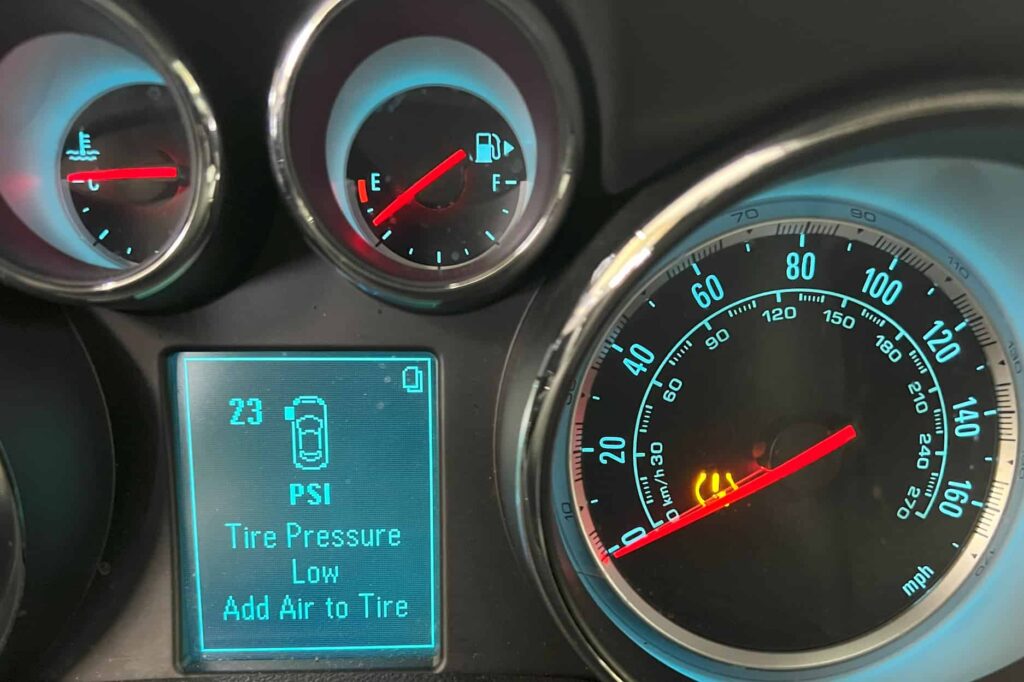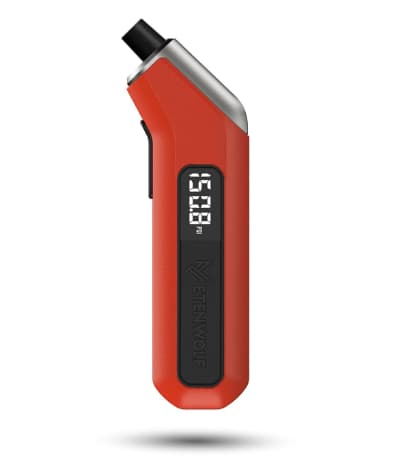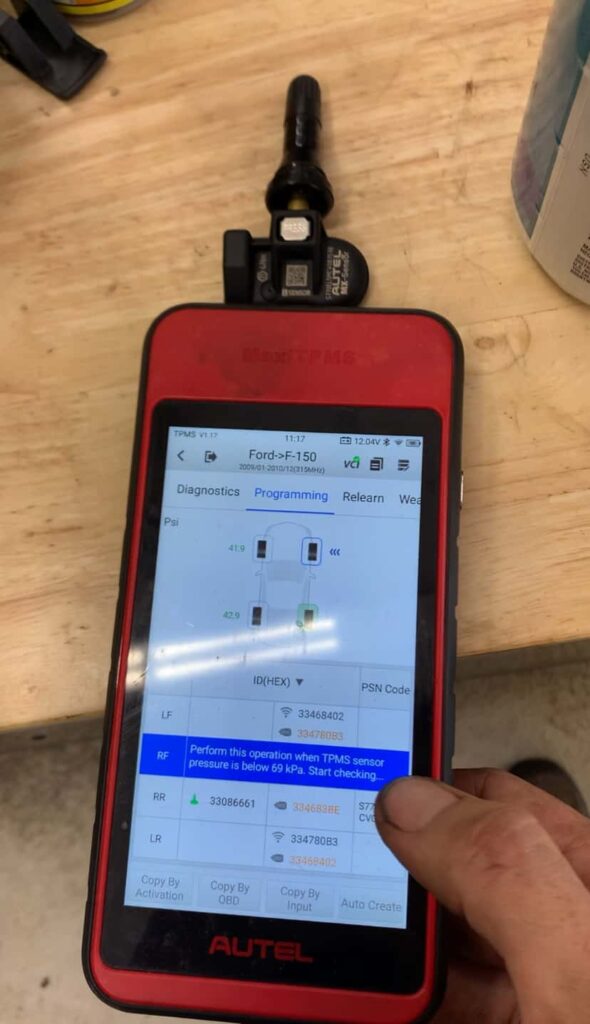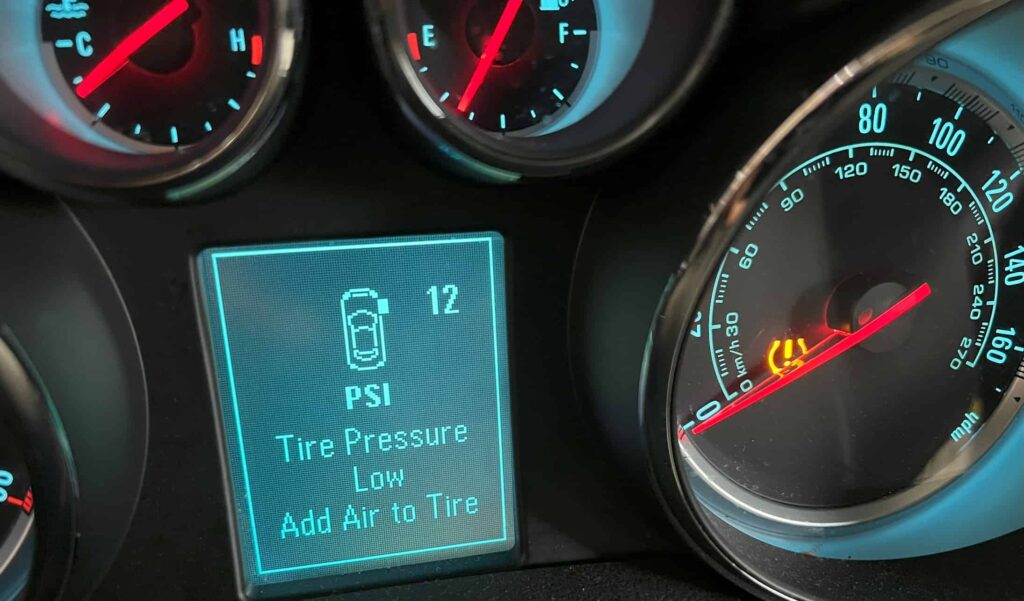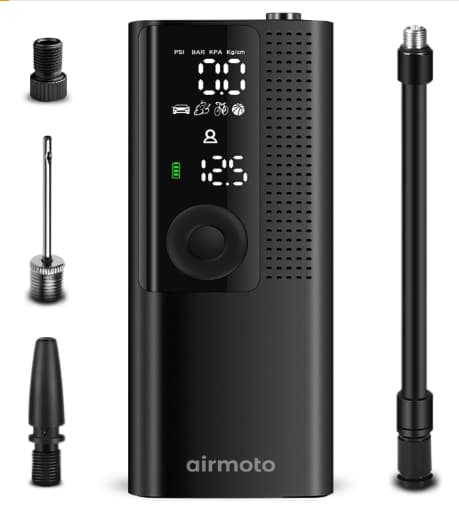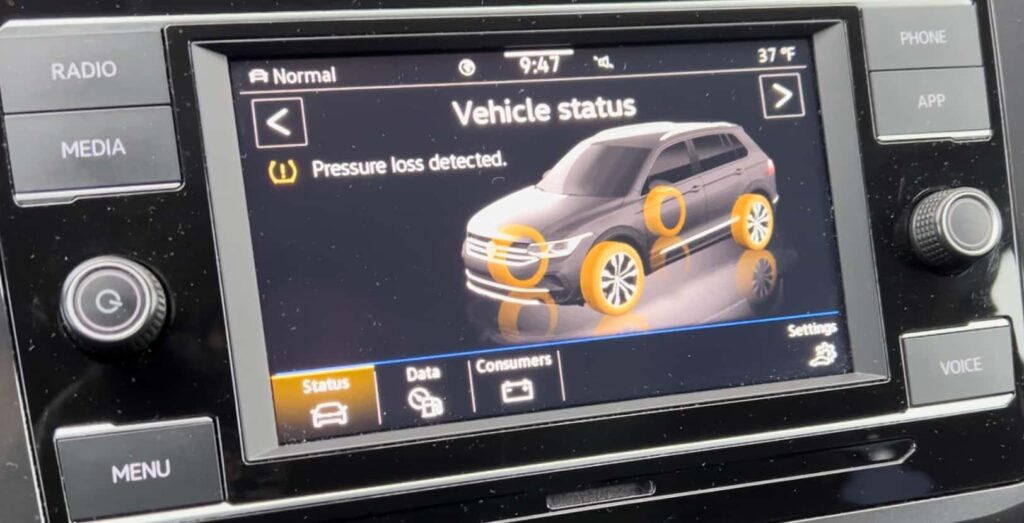If your low tire pressure light is on your car’s dashboard after you fill your tires, this guide is for you.
What is the Tire Pressure Monitoring System (TPMS)?
The TPMS is an essential electronic system in your vehicle designed to monitor the air pressure in all the tires. It alerts you via the TPMS warning light if the air pressure falls below the recommended level.
Why Does My Car Need a Low Tire Pressure Monitoring System?
Maintaining correct tire air pressure is crucial for safety, fuel efficiency, and preventing uneven tread wear and separation. The tire pressure monitoring system helps ensure your car tires are always inflated to their proper air pressure levels.
Ok, So I need a Low Tire Pressure Monitoring System, But How Does it Work?
There are two main types: direct TPMS and indirect TPMS. Direct TPMS measures pressure with tire pressure sensors in each tire, while indirect TPMS uses wheel speed sensors to infer tire air pressure. Both types of tire pressure monitoring systems alert you with a tire pressure warning light if adjustments are needed.
Faulty Tire Pressure Sensor
A faulty tire pressure sensor can cause the TPMS light to stay on. These sensors, crucial for detecting low tire pressure, may malfunction or lose battery power over time, requiring replacement and then recalibration.
The Tire Air Pressure Warning Light Came on. Now What Do I do?
When the tire pressure light illuminates, check your tire pressure with a tire gauge. Adjust the air pressure in your tires to the correct pressure as stated on the inside of the driver side door panel and follow your vehicle’s manual reset or calibration if it has one. If it does not have a reset button or calibration process, drive the vehicle for at least 15 minutes exceeding 25 mph.
Why is My Tire Pressure Light On When My Tires Are Fine?
This could be due to a slow leak (bead seal, valve stem or a simple nail or screw), temperature drops, or a malfunctioning tire pressure sensor. Ensure the pressure in your tires is checked manually and the system is reset as needed.
Why is My Tire Pressure Light On After Filling Tires?
This can occur if the TPMS system was not properly reset, if there’s an issue with a tire pressure sensor, wheel speed sensor, or if a tire is losing air rapidly enough that even after filling it, it is still low on air. Ensure you’ve added air to the correct pressure level, its holding air, and attempt a system reset (or go for a drive).
Why Does the TPMS Warning Light Stay On and Come Back on After it's Been Reset?
If the TPMS warning light persists after a reset, it may indicate a slow leak, sensor issues, or the need for a system recalibration. If the tire pressures are correct and resetting the system did not turn off the light, use a TPMS diagnostic tool to pinpoint which tire pressure sensor is causing the problem.
Is It OK to Drive With My Tire Pressure Monitor Light On?
Driving with the TPMS light on is not recommended. Incorrect tire pressure can affect handling and safety. Check and adjust your tire pressure as soon as possible.
How to Reset a Tire Pressure Light
To reset the TPMS system, locate the TPMS reset button (often found in the glove compartment, next to or under the steering wheel, or in the information display screen settings) and manually reset it. Some vehicles require driving for a few minutes at specific speeds to complete the reset.
At What PSI Will the Low Tire Pressure Warning Come On?
The low tire pressure light typically comes on when tire pressure is 25% below the manufacturer’s recommended level. Some vehicle low tire lights will turn on after only 15% drops. Always maintain the correct pressure for optimal performance.
Can Low Tire Pressure Cause My ABS Light to Turn On?
Yes, significantly low tire pressure can affect wheel speed, potentially triggering the ABS light due to discrepancies in wheel speed sensors’ readings. Also, if your vehicle uses an indirect TPMS system and a wheel speed sensor is malfunctioning, the ABS light, low tire pressure light, traction control light, and power steering lights can all turn on.
Can Cold Weather Cause Your Tire Pressure Light to Go On?
Yes, cold weather can cause the air inside the tires to contract, leading to a drop in air pressure and potentially triggering the tire pressure warning light.
Frequently Asked Tire Light Questions
Is There a Difference Between the TPMS Light and the Low Tire Pressure Light?
While often used interchangeably, the TPMS light may indicate issues with the tire pressure monitoring system itself, while the low tire pressure light specifically indicates that one or more tires are significantly under-inflated.
Is It Safe to Drive With the Tire Pressure Light On?
No, it’s unsafe to ignore the tire pressure light. Driving on underinflated or overinflated tires can compromise vehicle safety and efficiency.
Can Over Inflating the Tires Cause the Tire Pressure Light to Come On?
Yes, overinflated tires can also trigger the low pressure warning light. Always adjust tire air pressure to the vehicle manufacturer’s exact recommended levels.
Why Did My TPMS Light Come On After New Tires?
Installing new tires can affect the TPMS sensors, requiring a system reset or sensor recalibration for accurate monitoring. If a tire technician is not careful, TPMS sensors can easily be broken when replacing tires. Also, if tires are replaced and the wheels are not put back in the position they came off, this can also cause an issue.
Does Tire Pressure Light Stay On With a Spare?
In vehicles where the spare tire is equipped with TPMS sensors, yes, the system will monitor the spare’s pressure as well, and the tire pressure light may illuminate if it’s not at the correct pressure. If your vehicle spare tire does not have a tire pressure sensor, low air pressure will not cause the TPMS warning light to turn on.
